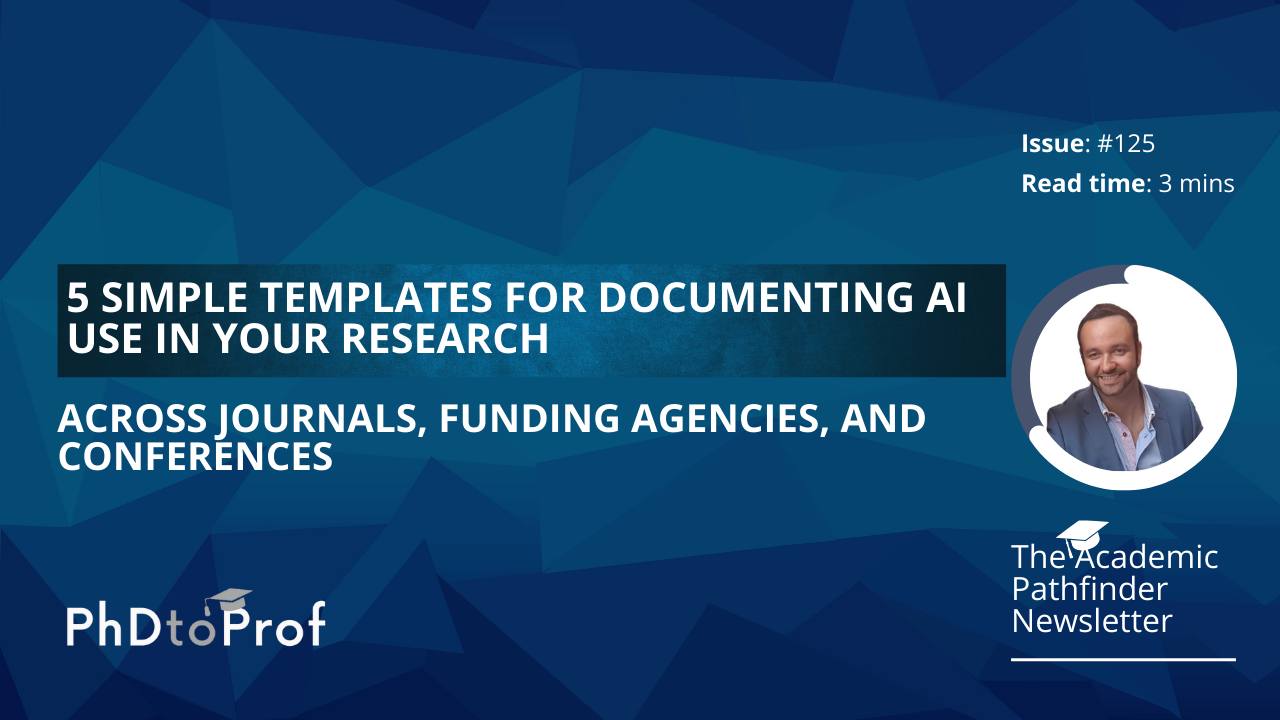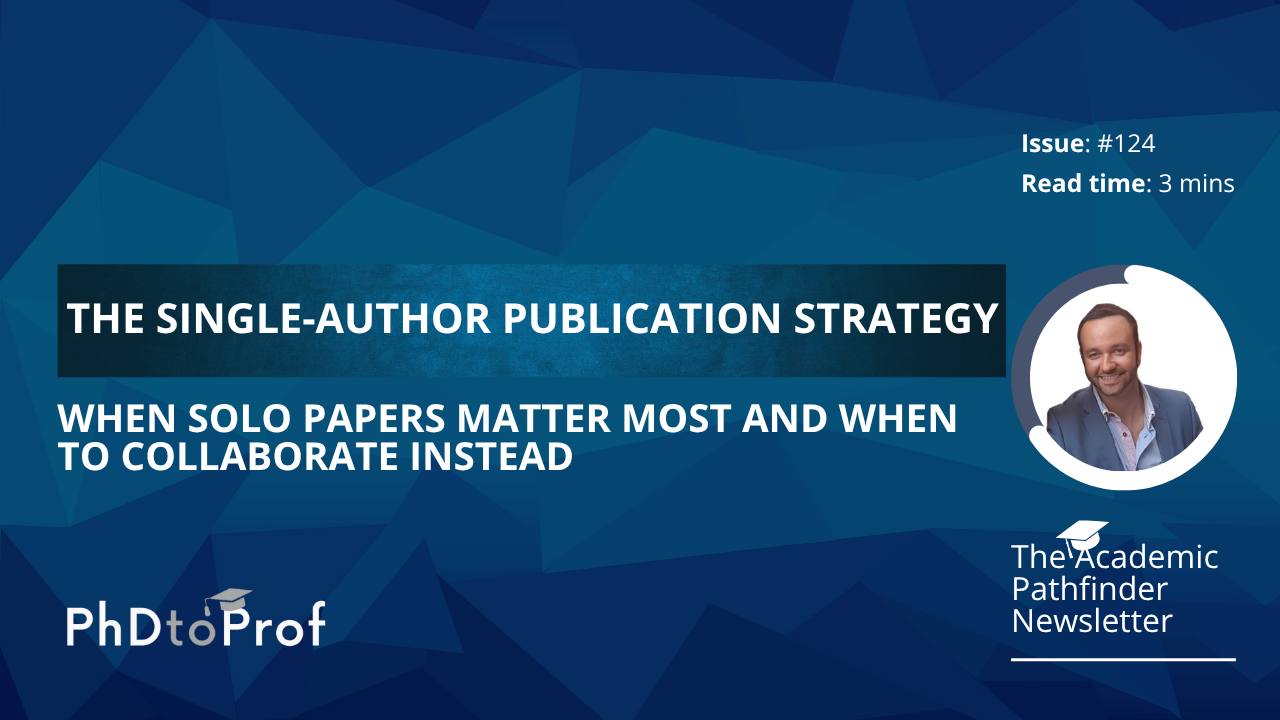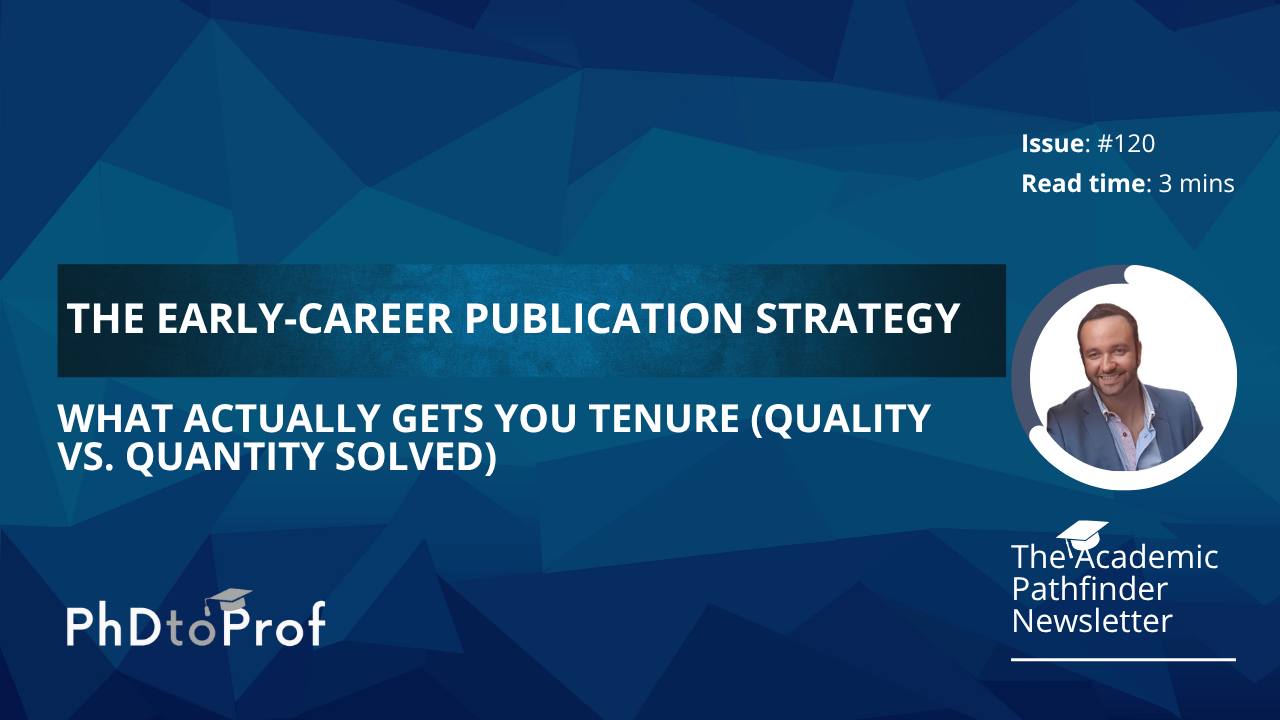#93 - The Perfect Academic CV: 6 Strategic Sections That Make You Stand Out (According to Actual Hiring Committee Members)

Today, I'm sharing the exact CV structure that has helped dozens of my mentees secure interviews at top institutions—insights gleaned from in-depth interviews with several hiring committee members across disciplines.
9 April 2025
Read time: 4 minutes
Supporting our sponsors directly helps us continue delivering valuable content for FREE to you each week — your clicks make a difference!
Yomu and Sourcely AITransform your research into a publication-ready paper with Yomu AI – your AI research assistant that streamlines the entire process from outline creation to citation management.Revolutionize your literature review with Sourcely – your AI research assistant that automatically discovers the most current and relevant papers for your research.Try both today. Use coupon codes PHDTOPROF20 for 20% off monthly and PHDTOPROF40 40% off yearly!
Anara AITransform your literature review process with Anara AI - a powerful tool that helps researchers uncover key insights and research gaps in minutes rather than months.Upload papers, ask targeted questions, and get immediate analytical summaries that highlight connections and opportunities in your field.Try it free at anara.com or use my code EMMANUEL20 for 20% off.
If you're like most academics, you've spent countless hours crafting your CV, carefully listing every publication, presentation, and committee assignment.
Yet you're still not getting shortlisted for positions you're qualified for.
What if I told you that most hiring committees spend less than 90 seconds reviewing each CV,
and they're looking for specific signals that most candidates completely miss?
Today, I'm sharing the exact CV structure that has helped dozens of my mentees secure interviews at top institutions—insights gleaned from in-depth interviews with several hiring committee members across disciplines.
These six strategic sections will transform your CV from a forgettable document to a compelling argument for why you're the perfect candidate.

When I first served on a faculty search committee, I was shocked by how quickly CVs were evaluated—and how arbitrary the process seemed.
The committee spent an average of 76 seconds per CV before making initial cut decisions.
More surprising was what committee members focused on (and ignored).
After this experience, I systematically interviewed faculty who regularly serve on hiring committees across disciplines and institutions.
Their insights revealed that most candidates organize their CVs based on what they think matters, not what actually influences hiring decisions.
Strategic Section 1: The Performance Summary (Your CV's Executive Brief)
While traditional CVs dive straight into education and employment history, hiring committees are scanning for key metrics in your first 15 seconds with your document.
❌ What most candidates do: Begin with detailed educational background, forcing hiring committees to hunt for impact metrics.
✅ What hiring committees want: An executive summary that instantly communicates your research impact, funding success, and teaching effectiveness.
🚩 Action strategy: Create a visually distinct "Performance Summary" section at the top of your CV (after contact information) that includes:
- Publication metrics: Total publications, citation count, h-index, and publications in top-tier journals
- Funding success: Total grant dollars secured as PI and co-PI
- Teaching impact: Average teaching evaluation scores relative to department averages
This section functions like an academic "trailer" for the detailed content that follows.
One hiring committee member told me, "If I don't see good numbers in the first 20 seconds, I assume they don't exist."
Strategic Section 2: The Distinction Markers (Your Unique Value Proposition)
While most CVs end with generic references to skills or interests, hiring committees are looking for unique attributes that distinguish you from similarly qualified candidates.
❌ What most candidates do: End their CV with a generic skills section or no conclusion at all.
✅ What hiring committees want: Clear articulation of what makes you uniquely valuable to their specific department.
🚩 Action strategy: Create a final section titled "Distinctive Qualifications" that includes:
- Cross-disciplinary connections that could foster new collaborations
- Unique methodological expertise or technical skills that complement the department
- Special capacities like industry partnerships, community connections, or policy experience
Strategic Section 3: Teaching Evidence (Not Just Courses Taught)
Most candidates simply list courses taught, while hiring committees seek evidence of teaching effectiveness and innovation.
❌ What most candidates do: Provide a chronological list of courses taught with brief descriptions.
✅ What hiring committees want: Evidence of teaching effectiveness, pedagogical innovation, and ability to teach courses the department needs.
🚩 Action strategy: Transform your teaching section to include:
- Effectiveness Metrics: Quantitative teaching evaluation data with departmental context
- Pedagogical Innovation: Specific teaching approaches or technologies you've implemented
- Capability Statement: Explicit list of courses you could immediately teach at their institution, including both existing courses from their catalog and potential new offerings
A hiring committee member from a teaching-focused institution shared, "I immediately look for candidates who have taken the time to examine our course catalog and specifically state which of our courses they can teach. It shows they've done their homework and are serious about our institution."
Strategic Section 4: The Funding Trajectory (Not Just Past Grants)
While most candidates simply list past grants, hiring committees are evaluating your future funding potential.
❌ What most candidates do: List previous grants with dollar amounts and dates.
✅ What hiring committees want: Evidence of an intentional funding strategy that will bring resources to their department.
🚩 Action strategy: Restructure your funding section to include:
- Past Success: Grants received with your specific role (PI, co-PI) and your portion of funding clearly marked
- Current Pipeline: Grants currently under review or in resubmission
- Future Strategy: Specific funding sources you're targeting in the next 2-3 years
A dean who regularly reviews faculty applications told me, "I'm not just hiring based on what you've already done—I'm investing in what you're going to do. A candidate who can articulate a clear funding strategy immediately stands out."
Strategic Section 5: Research Narrative (Not Just a Publication List)
Most candidates present their publications as a chronological list, making hiring committees work to identify research trajectory and impact.
❌ What most candidates do: List publications with full citations in reverse chronological order.
✅ What hiring committees want: Clear evidence of research coherence, trajectory, and impact that aligns with their department's needs.
🚩 Action strategy: Transform your publication section with these elements:
- Organize publications under 3-4 thematic research streams that show intellectual coherence
- Highlight impact metrics for key publications (citation counts, journal impact factors)
- Include a brief (1-2 sentence) research narrative at the beginning of each thematic section
One search committee chair noted, "I'm looking for someone who can tell a compelling story about their research program, not just someone who publishes randomly. The candidates who organize publications thematically immediately signal strategic thinking."
Strategic Section 6: The Strategic Service Portfolio (Not Just Committee Lists)
Most candidates treat service as an afterthought, listing committee assignments without context.
❌ What most candidates do: Provide a chronological list of committee assignments and professional service.
✅ What hiring committees want: Evidence of strategic service that demonstrates leadership potential and community impact.
🚩 Action strategy: Reorganize your service section into three categories:
- Institutional Leadership: Committee roles where you influenced policy or led initiatives
- Professional Impact: Disciplinary contributions like manuscript reviewing or conference organization
- Community Engagement: Work connecting academic expertise with broader societal needs
One department chair told me, "I'm looking for evidence that a candidate sees service as meaningful contribution, not just a box to check. Someone who has clearly chosen strategic service opportunities rather than just saying yes to everything."

Key Takeaways:
- Establish your external reputation from day one
- Prioritize relationships with influential department members
- Develop clear criteria for which opportunities to accept and decline
- Build your research infrastructure before diving into actual research
- Create teaching systems that maximize impact while minimizing time
→ Your Action Plan for This Week
- This week, I challenge you to implement just one of these strategic CV sections:
- Create your Performance Summary with key metrics at the top of your CV
- Reorganize your publications into 3-4 thematic research streams with brief narratives
- Develop your Funding Trajectory section showing past, present, and future grant strategy
Download my "Academic CV Template with Example" This template has helped dozens of my mentees secure interviews at institutions where they previously received form rejections.
Well, that’s it for today.
See you next week.
Whenever you're ready, there are 3 ways I can help you:
1. Get free actionable tips on how to secure a tenure-track job in academia by following me on X, LinkedIn and Instagram.
2. Take my Academic Job Seekers Assessment quiz to receive personalised recommendations & discover my 6P Academic Job Accelerator Program.
3. If you're ready to take your PhD application journey to the next level, join my PhD Application and Scholarship Masterclass waitlist. Click the link below to learn more and secure your spot.





Responses